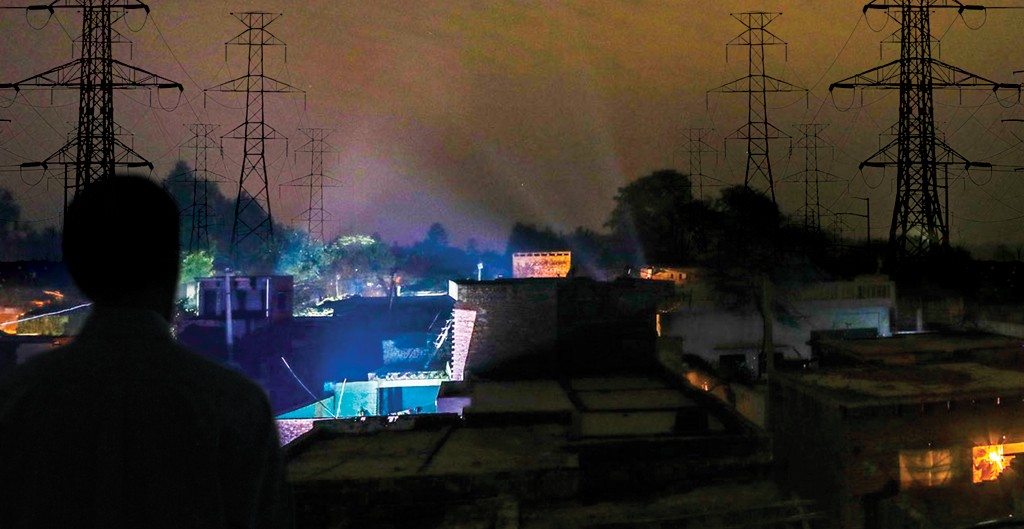Is Microgrid answer to rural India’s power woes?
By EPR Magazine Editorial April 3, 2017 2:28 am IST
By EPR Magazine Editorial April 3, 2017 2:28 am IST

The challenges are plenty; however microgrid has been a silver lining in the long history of darkness for rural India.
Microgrid can be defined as a small network of electricity users with a local source of supply that is usually attached to a centralised national grid but is able to function independently. From India’s context, rural microgrid is a small electricity network implemented at a village level with its own generation unit and the electricity generated thus supplied primarily to the village households and in some cases to some commercial load centres. These microgrids are often not connected to the national grid and have been set up in the villages where there is no grid connection or even if there is grid, power supply is highly erratic.
Rural Microgrid is not a new concept for India. India has been a pioneer in rural micro grids since 1990s through participation from the private entrepreneurs. These entrepreneurs took the initiative to light up the villages which were under the curse of dark since ages. In those days, when solar power was not available or was not an affordable technology, biomass or husk based generation was a technology of choice. With the advent of technology, solar power based microgrid has now become an obvious choice for the developers due to various reasons. These solar plants are modular in nature, capacity can be scaled up easily, easier and faster to install, fuel availability is not an issue and O&M is simpler. Capacities of these solar microgrids vary from less than a KW to as high as 10 – 12 KW. India Energy Storage Alliance (IESA) estimates that India has installed over 2,000 AC microgrids of over 5 kW by 2016 and over 10,000 DC microgrids with the majority sized at less than 1 kW.
A solar microgrid will typically have a set of solar individual modules with capacity of 150 – 400 W, a set of solar batteries with storage capacity of 75 – 150 Ah, controllers in some places, inverters for DC to AC conversion for bigger microgrids and finally a set of cables carrying the electricity to the households and other commercial load points. The households generally get to light 2 – 3 bulbs and a plug point for charging mobiles. Most of the cases, the power from the microgrid is consumed between 6 – 11 pm in the night. In most of the villages, there is no meter installed to measure the consumption and villagers pay a fixed sum every month irrespective of their consumption.
In 2014, the World Bank ranked India as home to the world’s largest unelectrified population. Power was unaffordable, inadequate or non-existent for 240 million people, according to data from the International Energy Agency. The residential sector consumes only about 22 per cent of India’s net generation compared to 37 per cent in the United States. Many Indians with access to electricity, particularly in rural areas, experience chronic rolling blackouts, power outages, and curtailments. The present government after coming to power has decided to ensure power for all by 2019 and decided to electrify the balance 18,452 unelectrified villages within 1,000 days. Till date, it has been able to electrify 12,699 villages. It is important to know the definition of electrification from Indian context. A village is called electrified if only 10 per cent of its households and other common places like schools etc have access to electricity. Thus, though most of the villages in the country are now electrified, some 47 million rural households are still without electricity, and even those connected to the grid suffer frequent outages.
Experts believe that business opportunity is huge in the field of rural microgrid in India. That is why, in recent times, not only the private entrepreneurs but also some of the global technology giants have shown their business interest in Indian rural microgrid sector. They have already participated in some of the rural microgrid projects in India and have tried to showcase the technology it possesses for such applications. So far, these rural microgrid projects have been funded through various routes – We have seen participation from private entrepreneurs, corporate, NGOs, DISCOMs and technology companies. Some of the developers have even been able to get funding from outside agencies like Asian Development Bank, USAID’s Development Innovation Ventures, International Finance Corporation etc. Government also provides significant subsidy to these microgrid projects. Developers have also worked out various business models in order to make the venture sustainable. Some developers have focused on the villages where there are telecom towers nearby in order to ensure constant load, while some has identified a Village Level Entrepreneur (VLE) who has been made the owner of the asset to bring more accountability at the village level. On the similar lines, some developer has made the community the eventual owner of the solar microgrids they set up. It will take some time for the developers to figure out the perfect business model for rural microgrids and we expect some consolidation to happen in this industry in the coming days.
Author:Rudranil Roysharma
GM & Senior Consultant,
Energy Vertical,
Feedback Business Consulting Services Pvt Ltd.
We use cookies to personalize your experience. By continuing to visit this website you agree to our Terms & Conditions, Privacy Policy and Cookie Policy.